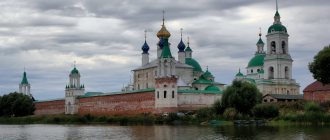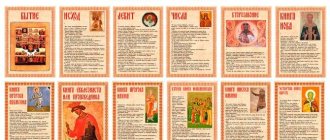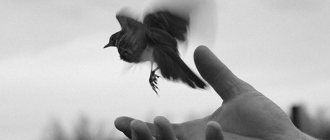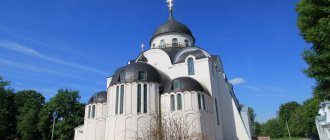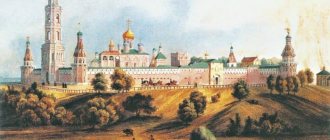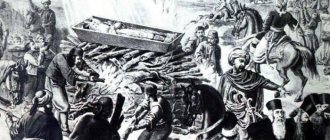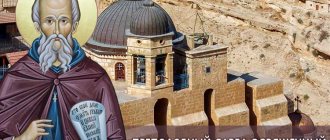| Tver Resurrection Cathedral |
Tver and Kashin diocese of
the Tver Metropolis of the Russian Orthodox Church
- Diocesan administration: Russia, 170006, Tver, st. Sovetskaya, 10
- Tel./fax, 32-12-08
- Official site:
- Canonical territory: Bologovsky, Vyshnevolotsky, Kalininsky, Kalyazinsky, Kashinsky, Kimrsky, Konakovsky, Kuvshinovsky, Ostashkovsky, Selizharovsky, Staritsky, Torzhoksky and Firovsky districts of the Tver region
- Cathedrals: Resurrection in Tver, Ascension in Kashin
- On the map: Yandex.Map, Google map
The Tver land has long belonged to the Krivichi region.
Consequently, in church affairs it had to depend on the hierarchy established in Polotsk... ” [1]. An independent department was established between 1250 and 1271 [2], having been separated from the Polotsk diocese. The white stone Spaso-Preobrazhensky Cathedral of 1285-1290 in the Tver Kremlin became the first monumental structure erected on Suzdal land after the Tatar invasion.
The archdiocese was established on January 26, 1589. The XVI-XVII Councils repeatedly decided to separate the bishoprics of Rzhev and Kashin from the Tver See, but in reality this was not carried out. In 1681, with the appointment of Metropolitan Barsanuphius (Eropkin), it was planned to raise the department to the level of metropolitanate, but this decision was canceled.
Until 1669, the Tver diocese followed in rank after the Ryazan, and then the Vologda. With the adoption of ecclesiastical states in 1764, the diocese was designated the twelfth, and from 1800 until the abolition of the diocesan states it was the eleventh, following the Ryazan see.
On February 29, 1836, the Staritsa Vicariate was established in the diocese. Local veneration of the Cathedral of Tver Saints has been known since the beginning of the century.
During the years of godless persecution, the diocese shared the widespread fate of the Church in the USSR. Temples were confiscated and destroyed, and in the 1920s the diocese lost its centuries-old Transfiguration Cathedral. In the 1920-1930s, there were vicariates of the diocese of Kashinskoye, Ostashkovskoye, Bezhetskoye, Kimrskoye, Rzhevskoye, but they were all discontinued by 1937.
In the 1920s and 30s, there was a renovation department of the same name.
In the 1940-1990s, the Trinity Cathedral (“White Trinity”) of Tver became the cathedral.
The diocese united parishes and monasteries in the Tver region.
On December 28, 2011, the independent Bezhetsk and Rzhev dioceses were separated from the Tver diocese, which, together with the Tver diocese, were included in the newly formed Tver metropolis.
Historical names
- Tverskaya (from 1271)
- Tverskaya and Kashinskaya (1289 - 1589) [3]
- Tverskaya and Staritskaya (1589) [4]
- Tverskaya and Kashinskaya (1589 - mentioned 1917)
- Kalininskaya and Staritskaya (since 1931)
- Kalininskaya and Velikolukskaya (from January 29, 1935) [5]
- Kalininskaya and Smolenskaya (1943 - 1944)
- Kalininskaya and Velikolukskaya (1944 - end 1946/1947)
- Kalininskaya and Kashinskaya (end 1946/1947 - July 19, 1990)
- Tverskaya and Kashinskaya (since July 19, 1990)
Statistics
- January 1, 1958 - 91 registered temples/houses of worship [6] .
- OK. 2004 - 197 parishes; 252 clergy (231 priests, 21 deacons) [7].
- December 31, 2006 - 214 parishes (of which 45 were city, 27 village, 135 rural, 7 farmsteads), 13 monasteries, 149 chapels (of which 13 were house chapels), 48 worship crosses; 260 priests (of which 34 are monastics), 34 deacons (of which 8 are monastics) [8].
- OK. December 2011 - clergy (not counting monastery residents in holy orders) - 302 [9].
- beginning December 2011 - 14 monasteries (of which 10 are women’s); 315 parishes, 78 affiliated churches, 149 chapels (of which 13 are house chapels); 298 full-time priests, 48 full-time deacons, 3 clergy from other dioceses [10].
Bishops
- St. Simeon I of Polotsk (mentioned 1272 - February 3, 1289)
- Andrey (Gerdenev) (1289 - March 28, 1316)
- Barsanuphius I (1316 - 1328)
- Theodore I (1330 - 1342)
- Theodore II (1342 - 1360)
- Vasily (1361 - 1372)
- Euthymius I Wisłań (9 March 1374 – July 1390)
- St. Arseny (July 24, 1390 - March 2, 1409)
- Anthony (February 2, 1411 - 1434)
- Elijah (1435 - December 30, 1456)
- Moses (January 28, 1458 - 1461)
- Gennady (Kozhin) (March 25, 1461 - April 1477)
- Vassian (Strigin-Obolensky) (December 6, 1477 - May 23, 1508)
- Neil the Greek (24 August 1509 – 3 April 1521)
- St. Akaki (March 30, 1522 - January 14, 1567)
- St. Barsanuphius II (1567 - 1570)
- Savva (1570 - 1573)
- Theodoret (1573 - 1578)
- Zechariah (autumn 1578 - 1602)
- sschmch. Theoktist (January 15, 1603 - 1609)
- St. Arseny Elassonsky (1613 - 1615)
- Paphnutius (February 17, 1620 - 1628)
- Euthymius II (October 26, 1628 - 1642)
- Jonah (December 24, 1642 – July 26, 1654)
- Lawrence (April 16, 1654 - July 26, 1657)
- Joasaph (August 1657 - 1676)
- Simeon II (April 16, 1676 - July 1681)
- Barsanuphius III (Eropkin) (September 6 - December 1681)
- Sergius (Veltakhov) (February 5, 1682 - 1702)
- Kallist (Poborsky) (February 21, 1703 - June 23, 1711)
- Alexy (Titov) (November 9, 1712 - January 21, 1714)
- Varlaam (Kosovsky) (January 21, 1714 - March 3, 1720)
- Sylvester (Kholmsky-Volynets) (March 3, 1720 - February 3, 1723)
- Theophylact (Lopatinsky) (1723 - December 13, 1738)
- Mitrofan (Slotvinsky) (beginning 1739 - December 7, 1752)
- Veniamin (Putsek-Grigorovich) (February 28, 1753 - April 2, 1758)
- Afanasy (Volkhovsky) (April 23, 1758 - May 26, 1763)
- Innocent (Nechaev) (May 28 - October 4, 1763)
- Gabriel (Petrov) (December 6, 1763 - September 22, 1770)
- Plato (Levshin) (October 10, 1770 - January 25, 1775)
- Arseny (Vereshchagin) (April 1, 1775 - September 22, 1783)
- Joasaph (Zabolotsky) (September 22, 1783 - February 13, 1788)
- Tikhon (Malinin) (May 6, 1788 - May 18, 1792)
- Iriney (Klementyevsky) (June 6, 1792 - October 17, 1798)
- Pavel (Ponomarev) (October 26, 1798 - December 26, 1799)
- Pavel (Zernov) (January 15, 1800 - December 18, 1803)
- Methodius (Smirnov) (December 31, 1803 - August 30, 1814)
- Seraphim (Glagolevsky) (August 30, 1814 - March 15, 1819)
- St. Filaret (Drozdov) (March 15, 1819 - September 26, 1820)
- Simeon (Krylov-Platonov) (September 26, 1820 - July 3, 1821)
- Jonah (Pavinsky) (July 21, 1821 - November 6, 1826)
- Ambrose (Protasov) (November 6, 1826 - July 1, 1831)
- Grigory (Postnikov) (July 25, 1831 - March 1, 1848)
- Gabriel (Rozanov) (March 1, 1848 - February 15, 1857)
- Philofey (Uspensky) (February 15, 1857 – May 5, 1876)
- Alexy (Rzhanitsyn) (September 9, 1876 - June 9, 1877)
- Eusebius (Ilyinsky) (December 8, 1877 - March 12, 1879)
- Savva (Tikhomirov) (April 23, 1879 - September 18, 1896)
- Dimitry (Sambikin) (November 2, 1896 - March 26, 1905)
- Nikolai (Ziorov) (March 26 - April 8, 1905)
- Nikolai (Nalimov) (April 8 - July 1, 1905)
- Alexy (Opotsky) (July 1, 1905 - January 29, 1910)
- Anthony (Karzhavin) (January 30, 1910 - March 16, 1914)
- sschmch. Seraphim (Chichagov) (March 23, 1914 - late 1917)
- Arseny (Smolenets) (1917 - September 7, 1917) high school bishop. Staritsky
- sschmch. Peter (Zverev) (1921 - 1922) high school bishop. Staritsky
- Pavel (Pavlovsky) (1926) v/u
- Macarius (Daev) (1958) v/u, archbishop. Mozhaisky
- Alexy (Konoplyov) (March - November 1960) high school bishop. Luzhsky
- Filaret (Vakhromeev) (September 6, 1971 - August 1972) senior, bishop. Dmitrovsky
Sports and service
Metropolitan Ambrose, as mentioned above, loved to ride a bicycle along the streets of St. Petersburg and Moscow. In addition, he worked out on simulators and was quite active.
“Now I’ve become very lazy,” the bishop complains, “for which I scold myself.” Movement helps a person feel better. And it helps you fulfill your responsibilities more fully. This in no way contradicts the ascetic lifestyle, quite the opposite. In my understanding, what you have to force yourself to do can be considered, albeit a small, ascetic feat,” he laughs.
In general, the Russian Orthodox Church does not limit clergy in choosing a sport, be it swimming or long jump - whatever. Moreover, among the priests there are quite a few professional athletes who need exercise to maintain their health. Perhaps the church is not ready to see its representative in the professional ring, but as a wrestling or even boxing coach - please.
Geography of deaneries
- I-e Tverskoe, II-e Tverskoe:
- Tver
- Bologoye
- Vyshny Volochek
- With. Vasilyevskoe
- Kashin
- Kimry
- Konakovo, village. Zavidovo, village Karacharovo, village Sverdlovo, village. Selikhovo, village Tashilovo
- Ostashkov, Selizharovo village
- Torzhok, Staritsa
- Temples under the jurisdiction of the ruling bishop
- Deanery of monasteries, bishops' and monastic farmsteads
New Year on Athos
With the exception of the last two years, for several years in a row the bishop spent the days of the New Year holiday on Mount Athos. As he says: “I moved from year to year naturally, without noticing it in any way, in the circle of worship and obedience.” In Moscow, he spent New Year's Eve at a church service and then went to bed. Although once it felt like a holiday. Being the rector of the academy, after the service he invited the clergy and students to his place: they talked together and drank some champagne. But the metropolitan has not seen the president’s address in recent years, because the service is taking place right at that time.
Monasteries
- Volgoverkhovsky Olginsky (female)
- Vyshnevolotsky Kazansky (female)
- Zheltikov (inactive)
- Zhitenny Smolensky (female, previously male)
- Kalyazinsky Troitsky (closed in 1920, dismantled and sunk)
- Kashinsky Klobukov (female)
- Nikolo-Malitsky (male)
- Nilo-Stolobenskaya desert (male)
- Novotorzhsky Borisoglebsky (male)
- Orshin Voznesensky (female)
- Ostashkovsky Znamensky (abolished in the 1920s)
- Youth of Uspensky (inactive)
- Savvin Sretensky (abolished in 1764)
- Selizharovsky Troitsky (inactive)
- Staritsky Uspensky (male)
- Tverskoy Ekaterininsky (female)
- Tverskoy Rozhdestvensky (women's)
- Tver Three Saints (inactive)
- Tverskoy Feodorovsky (abolished in the 18th century)
Love to the animals
— Once they gave me a Labrador, he was six months old at that time. I raised him for another six months, during which time we tested each other’s character. He was a very thoroughbred, born in one of the nurseries in Ireland. I felt sorry for the animal that I couldn’t devote time to. Sometimes I even brought him with me to the office of the rector of the St. Petersburg Theological Academy. He would sit next to me and, if someone approached me, he would start raising his paw. When I told him: “Wait,” he went into a corner, looked at me with pitiful eyes and sighed like a man. He evoked such emotions in me that I realized: I had to choose - to spend time and energy on him or on the students and my basic obedience.
Then the owner made a decision, and he had to part with the Labrador. The dog lived for several years with a wonderful family who loved him. While telling this story, the Metropolitan looks into the corner, as if looking for a dog there, and continues.
— For some reason, some of our clergy say that it is a sin to have a dog in the house, but, they say, you can have a cat, and not always, but a dog is an unclean animal. I now appeal to such clergy: watch the film “Where are you, Adam?” All crippled dogs are collected in the monastery on Mount Athos, and there are countless cats there; they catch snakes and rats. Hegumen Gregory says: “One must be able to love creation.” This applies not only to dogs, but also to flowers, trees, even water, everything. One must be able to love nature created by God. And animals teach us this very well: both love and patience.
Educational establishments
- Diocesan secondary school named after. St. Tikhon Zadonsky (since 1993)
- cultural and educational at the Elias Church in Konakovo
- Department of Orthodox Theology of Tver State University (since 1997)
- school of choral singing at the Ascension Cathedral in Tver
- Orthodox gymnasium, p. Gorodnya-on-Volga
- Vyshnevolotsk Orthodox secondary school named after. St. Sergius of Radonezh
- cultural and educational center at the Ascension Cathedral in Tver
- spiritual and educational center of Udomlya
- Tver Orthodox comprehensive secondary school named after. St. Tikhon of Zadonsky
- educational institution-complex of primary and preschool education “Russian School” (since 1998)
- Tver Theological Seminary (inactive)
- Kashin Theological Seminary (inactive)
- Vyshnevolotsk Theological School (inactive)
- Kashin Theological School (inactive)
- Novotorzhsky Theological School (inactive)
- Ostashkovo Theological School (inactive)
- Staritsa Theological School (inactive)
- Tver Theological School (inactive)
- Tver Diocesan School (inactive)
Temples
- Cathedral of the Resurrection of the Word (Resurrection Cathedral) . Address: Tver, Barrikadnaya street, 1. Telephone: +7 (4822) 42-25-21;
- Church of the Life-Giving Trinity (White Trinity Cathedral) . Address: Tver, Troitskaya street, building 38. Telephone: +7 (4822) 34-53-12;
- Church of the Annunciation of the Blessed Virgin Mary . Address: Tver region, Kalyazinsky district, Apukhtino village. Phones: +7 (916) 955-19-52
- Cathedral of the Ascension of the Lord in Rzhev . Address: Tver region, Rzhev, Krasnoarmeyskaya side.
- Ascension Cathedral in Tver. Address: Tver, Sovetskaya street, 26. Telephone;
- Cathedral of the Korsun Icon of the Mother of God . Address: Toropets, Komsomolskaya street, 6.
- Temple of the Great Martyr Demetrius of Thessalonica . Address: Tver region, village. Berezino, Sadovaya street, 69. Phone: +7 (960) 701-28-20;
- Laptev-Pokrovskaya Church.
- Church of the Intercession of the Blessed Virgin Mary . Address: Tver, embankment of the Tmaki River, 1A. Phones: +7 (4822) 32-06-92
- Church of the Holy Apostles Peter and Paul (Kashin).
- Sorrow Church in Tver (icon of the Mother of God of All Who Sorrow, Joy of All Who Sorrow). Address: Tver, Andrey Dementyev street, 1. Telephone;
- Church of the Intercession of the Blessed Virgin Mary (Church of the Intercession in Turginovo). Address: Tver region, Turginovo village, Torgovaya Square, 3. Phones +7 (915) 716-50-65:
- Church of the Resurrection of Christ (Three Confessors) . Address: Tver, Afanasy Nikitin embankment, 38. Telephone
- Count's Church in Chertolino (Church of the Holy Trinity) . Address: Tver region, Rzhevsky district, Chertolino estate.
- Church of St. Nicholas (Church of the Annunciation of the Blessed Virgin Mary) in Apukhtino. Not active. Address: Tver region, Kalyazinsky district, village. Apukhtino. Phones: +7 (919) 729-48-91;
- Church of the Great Martyr Nikita . Not active. Address: Tver, Shishkova street, 6.
Literature
- Encyclopedia Tver region
, 1994. - Pokrovsky, V.I., Historical and statistical description of the Tver province
, vol. 1-2, Tver, 1879-1880. - Reference book on the Tver diocese for 1915
, Tver, 1914, 554 pp. section pag. - Pervukhin, G.P., About the Tver hierarchs
, Tver, 1901, 175 p. - Rothermel, B. N., Tver and Tver rulers 1773-2003.
, Tver, 2006. - Sysoev, V.I., Tver Governor Alexander Pavlovich Bakunin
, Tver, 2004. - “Synodik of Tver Hierarchs”, Tver Diocesan Gazette
, No. 1, 2003 [11] - "Orthodox churches of the Tver land"
"Where are you, Adam?" and "The Young Pope"
There is very little room for cinema in the life of Metropolitan Ambrose, and no place at all for television. However, literally the day before the interview, he was at the Zvezda cinema for the premiere screening of the documentary “Where Are You, Adam?” The filming of the film took place on Mount Athos, and, according to the Metropolitan, his acquaintance, the archdeacon from Kyiv, was involved in this. The film depicts the daily life of the monks, with worship, fishing, arguing and getting out of arguments.
— The film begins with the words of the abbot, where he thanks God for everything that happened in his life, and most of all for the injustice and reproach that he experienced during his life. Because it was in them that he found himself and felt what humility meant in his life - the film itself, as the Bishop says, is very laconic, but at the same time it tells a lot about life in the monastery.
Despite his busy schedule, the Metropolitan watched the series “The Young Pope,” like many clergy. Because it made waves in religious circles when it came out in 2016. Handsome Jude Law in the role of the Pope swims in the pool, hangs snow-white socks on a line, smokes, dresses in papal vestments, works out on exercise equipment and prays so that God hears him. The series caused controversy - is it possible to so openly show a person with such a status.
— I think this is a brilliant creation of the director, and genius is also expressed in the fact that space opens up for so many thoughts. What is surprising and very correct is that the Catholic Church did not oppose this film, but, on the contrary, turned it to its advantage.
The Metropolitan explains that the image of the pope depicted in the series is collective. People close to the Vatican immediately recognized him as various real popes. And the film has served the Catholic Church well, despite the controversy. But we have a different mentality, such openness does not suit us.
“Unfortunately, we actually still have patterns and complexes that do not allow us to treat each other correctly. I have been to the Balkans and Greece many times and have seen how clergy there communicate with their flock. They can go to a restaurant together, discuss something, drink coffee together, have dinner. And this is not considered something reprehensible. Moreover, clergy there never wear civilian clothes; in Greece this is prohibited by the Constitution, where the church is not separated from the state. In addition to the fact that the flock will not accept him later, a priest in secular clothing can be fined by the police. Therefore, they do not hesitate to wear a cassock to the market, to a store, to a restaurant, or to communicate with young people. In our country, unfortunately, if a priest comes to such a place, they will photograph him and then interpret it in their own way. Our mentality does not yet allow us to correctly understand such ordinary human things. Not everything that our people consider to be a sin is. It is not a sin to come and communicate with some person, it is a sin to approve of some bad act or participate in it. But communicating, even publicly, is not only not a sin - it is a virtue.
The Tver diocese is the oldest diocese in the Russian Orthodox Church
Tver, worn from 1931 to 1990. name Kalinin, is the oldest city in Russia. Founded in 1135.
The city became the capital of the Tver Principality in the middle of the 13th century. It became the formal center of Ancient Rus' in 1264, when the Tver prince Yaroslav Yaroslavich received the label for the great reign of Vladimir.
The beginning of the heyday of Tver dates back to the end of the 13th - beginning of the 14th century, during the reign of Mikhail Yaroslavich.
V.P. Vereshchagin. “Grand Duke Yaroslav Yaroslavich. 1263-1272" 1896 The Tver department was established under the Grand Duke Yaroslav Yaroslavich. Photo: upload.wikimedia.org
The department of the Tver diocese is one of the oldest in the Russian Orthodox Church. It was established under the Grand Duke Yaroslav Yaroslavich no later than 1271, by separating it from the Polotsk diocese.
As the chronicles say: Tver land has long “belonged to the Krivichi region. Consequently, in church affairs it had to depend on the hierarchy established in Polotsk...”
The white stone Spaso-Preobrazhensky Cathedral of 1285-1290 in the Tver Kremlin became the first monumental structure erected on Suzdal land after the Tatar invasion. On January 26, 1589, an archdiocese was established on the territory of the diocese.
The department of the Tver diocese is the oldest in the Russian Orthodox Church.
In degree, the Tver diocese until 1669 followed the Ryazan, and then the Vologda; according to what existed from 1764 to 1868. division of dioceses into classes, the Tver diocese was listed as twelfth in 1764, in 1800 and 1869. eleventh and followed directly after Ryazan.
Moscow councils of 1589, 1667, 1681 and 1682 A bishopric was established in Rzhev and was supposed to be established in 1589 and 1681. bishopric in Kashin. However, in practice it did not exist.
Polotsk, end of the 18th century. Historically, the Tver diocese took over the Polotsk hierarchy in church affairs (now Polotsk is located on the territory of Belarus). Photo: upload.wikimedia.org
On February 29, 1836, the Staritsa Vicariate was established, but on October 1, 1840 it was closed and restored only on November 9, 1866. The Staritsa Vicariate existed until 1926.
From 1920 to 1924 there was a Vicariate of Kashin;
from 1920 to 1937 there was the Ostashkov Vicariate;
from 1928 to 1937 there was a Vicariate of Bezhetsk;
from 1929 to 1936 there was a Vicariate of Kimry;
from 1930 to 1936 there was a Rzhev Vicariate.
Priest and luxury
Luxury items from a clergyman, be it accessories, a car or clothing, usually cause a wave of indignation in society. According to Metropolitan Ambrose, if a priest looks too rich compared to parishioners, this undermines trust, even if he received luxury items as a gift. He can accept gifts, why not? If at the same time he does not set himself the task of looking special, successful. But the other extreme is also not good.
— The priest needs to focus on the average parishioner. Naturally, he should not look too rich, but he should not look deliberately poor and wretched either. The most important thing is that the clergy be neat and tidy. And so that what they do does not become a reason for pride or an expression of stupidity. By exposing himself to ridicule, the priest is exposing the church to ridicule.
